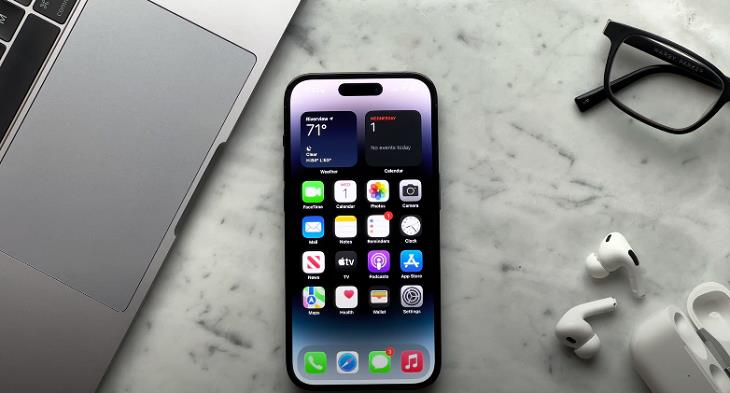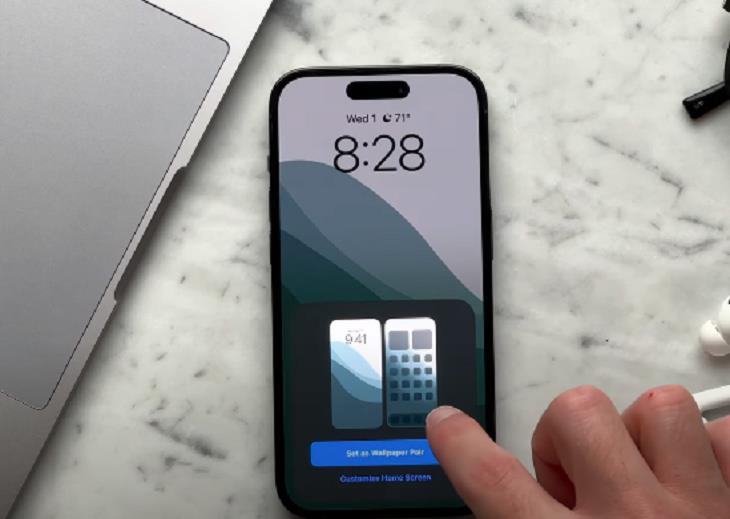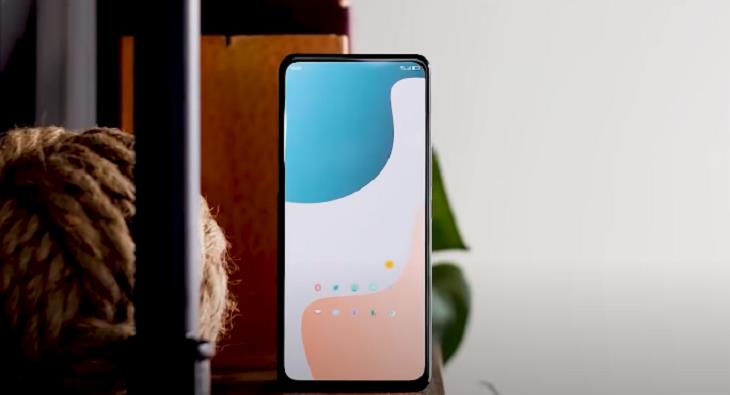

Open up the Settings screen on iOS, and select Home Screen to decide where to put new apps: Pick App Library Only to add them to the final home screen, or Add to Home Screen to create another shortcut on a standard home screen as well. The former option is the one to go for to keep your home screens as uncluttered as possible (you can easily add app shortcuts manually if you need to). The App Library automatically categorizes your apps and you can easily access them by swiping left from the final home screen.
If you wish to delete an app shortcut on a home screen, simply tap and hold, then drag the shortcut until a small minus symbol (–) appears. Tap on this to remove the shortcut without deleting the app. Any website shortcuts you might have created in Safari can be removed in the same way.
When it comes to widgets, it's the same process: a tap, hold, and gentle drag will bring up the symbol, enabling you to remove it (you can also press and hold, then choose Edit Home Screen from the menu that comes up). Some widgets offer a choice of sizes to let you keep your home screens more neatly laid out, but you can't do this on the fly—you need to remove the widget and add it again in a new size (press and hold on a blank part of the home screen and choose Edit Home Screen to do this).
See Also: This Feature on Your iPhone Exists for an Important Reason
With iOS, you have the option to create app shortcut folders on your home screen by tapping, holding, and dragging a shortcut until it starts shaking, and then dropping it on top of another icon. Your new folder will be given a name automatically, but you can tap and hold on to it and choose Rename to change this. You can also tap and hold and choose Remove Folder to get rid of it again.
You can delete entire home screens at a time and change their order. Tap and hold on an empty area of any home screen, then tap the dots at the bottom: a new screen appears showing thumbnails of your existing home screens. You can disable them by unchecking them, or remove them with the "–" (minus) symbols.
Apple has a feature that lets you hide app pages from view without deleting them. Simply long-press on an app page until it enters "jiggly" mode. Then tap on the page indicator at the bottom of the screen and deselect the pages you don't want to see. The hidden pages will be removed from the home screen until you choose to unhide them.
At the bottom of your iPhone's screen, you will find a dock where you can keep your most frequently used apps. But it can quickly become cluttered if you add too many apps to it. Keep it to a maximum of four apps and make sure they're the ones you use the most.

Image source: YouTube
Choose an organized-looking wallpaper to give your home screen a minimalistic yet appealing aesthetic. Go to Settings > Wallpaper and choose a new image or use one of Apple's default wallpapers. You can even choose to use one of your own photos or images.
Say goodbye to a cluttered and messy Android home screen by following these tips for decluttering and making it more visually appealing.

The first step in tidying up your Android home screen is to remove apps you no longer use. Over time, it's easy to accumulate many apps that we no longer need, so take the time to browse through your apps and delete any that you haven't used in a while. This will not only clear up space on your home screen, but also free up storage on your device.
See Also: 4 Things to Do Before Removing Apps from Your Phone
Just like on iPhones, you can streamline your Android home screen by categorizing your apps into neatly organized folders. Grouping similar apps together in folders can reduce visual clutter and make it easier to find the apps you need. To create a folder on Android, simply press and hold an app icon, then drag it on top of another app. A folder will automatically be created, and you can rename it however you like.
Widgets can be an excellent way to quickly access information or functions, but they can also clutter up your home screen. Be selective when it comes to widgets, and only use those you find truly useful. For example, a weather widget can be handy, but a widget for an app you rarely use is just taking up valuable space.
Having too many home screens can be overwhelming and make it difficult to find what you're looking for. Consider limiting the number of home screens on your device to just one or two. This will force you to be more selective about what apps and widgets you add to your home screen, and make it easier to find what you need.
Your home screen is the first thing you see when you unlock your phone, so it's important to make it visually appealing. Minimalist wallpapers can help achieve this by reducing visual clutter and giving your phone a sleek, modern look. When selecting a wallpaper, aim for a simple design with a neutral color palette that complements your app icons. You could even try using a live wallpaper to make your phone feel more dynamic and exciting. Additionally, you could consider customizing your wallpaper by adding an inspirational quote or an image that motivates you.
An icon pack improves the appearance of your home screen by making it more cohesive and organized. An icon pack is a collection of customized icons that can be used to replace the default icons of apps on your home screen.
They typically feature icons for popular apps like Facebook, Instagram, and Twitter, as well as less commonly used apps like calendars and calculators. Many icon packs also include wallpapers and other customization options to help you create a more unique and personalized home screen. Icon packs come in a wide range of styles, from minimalist and simple to colorful and complex. The Google Play Store has an extensive collection of both free and premium icon packs to choose from. You can effortlessly swap your default app icons with a minimalistic icon pack to enhance the visual appeal of your Android phone's home screen.
See Also: Switching from Android to iPhone? These Tips Will Be Handy
If you're feeling adventurous, consider using a custom launcher. Think of a launcher as a personalization tool for your Android phone that lets you take full control over the appearance and functionality of your device, replacing your default home screen and app drawer with a more customized look and feel. Additionally, many launchers come with built-in features like app hiding, custom gesture controls, and themes, making them a great tool for anyone who wants to declutter their home screen and streamline their mobile experience.
There are many free and paid launchers available on the Google Play Store, so experiment with a few to find one that suits your needs.
By following these simple yet effective tips, you can give your smartphone's home screen a complete makeover, making it more organized and visually appealing. Not only will it give your device a fresh look, but it will also enhance its functionality, making it a breeze to navigate through.